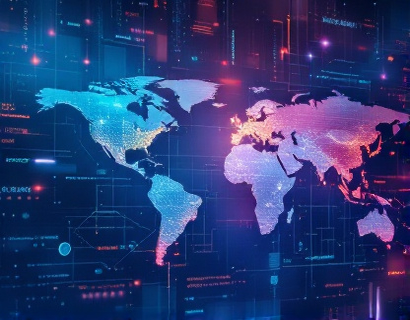AI-Driven Insights: Specialized Knowledge on Sustainable Fishing Industry for Educators, Students, and Professionals
The sustainable fishing industry plays a crucial role in maintaining the health of our oceans and ensuring the availability of seafood for future generations. With the increasing demand for seafood and the growing concerns about overfishing and environmental degradation, it is essential to have accurate and up-to-date information on sustainable fishing practices. An AI-powered chat platform offers a unique solution by delivering specialized insights into this vital industry, ensuring that educators, students, and professionals have access to verified and reliable information. This platform also includes a child-friendly version, making it safe and educational for young learners.
The AI chat interface is designed to interact with users and provide detailed information on various aspects of sustainable fishing. From understanding the principles of sustainable fishing to exploring the impact of fishing practices on marine ecosystems, the platform covers a wide range of topics. For educators, this resource can be an invaluable tool to integrate into their curriculum, providing students with accurate and engaging content. The platform's content verification process ensures that all information is accurate and up-to-date, making it a trusted source for learning and professional development.
Understanding Sustainable Fishing
Sustainable fishing refers to methods and practices that maintain the health and productivity of fish populations and their habitats. This approach aims to balance the needs of the fishing industry with the conservation of marine ecosystems. Key principles of sustainable fishing include avoiding overfishing, minimizing bycatch, and protecting critical habitats. Overfishing occurs when fish are caught at a rate faster than they can reproduce, leading to declining populations and potential collapse of fish stocks. Bycatch, the unintentional capture of non-target species, can have severe impacts on marine biodiversity. Protecting habitats such as coral reefs and mangroves is also crucial, as these areas serve as nurseries and feeding grounds for many fish species.
The AI chat platform provides comprehensive explanations of these concepts, along with real-world examples and case studies. For instance, it can discuss the impact of overfishing on specific fish species, such as cod or tuna, and explain how sustainable quotas and seasonal closures can help maintain healthy populations. The platform can also delve into the importance of ecosystem-based management, which considers the entire ecosystem rather than focusing on individual species.
Impact on Marine Ecosystems
The fishing industry has a significant impact on marine ecosystems, both positive and negative. Sustainable fishing practices can help preserve biodiversity and ecosystem health, while unsustainable methods can lead to irreversible damage. The AI chat platform offers insights into how different fishing techniques affect marine life and the environment. For example, bottom trawling, a method where large nets are dragged along the ocean floor, can destroy habitats and disrupt the balance of marine ecosystems. In contrast, selective fishing gear, such as hooks and lines, can reduce bycatch and minimize habitat destruction.
Another critical aspect is the role of marine protected areas (MPAs). MPAs are designated regions where human activities, including fishing, are restricted to protect ecological integrity. The platform can explain the benefits of MPAs, such as providing refuge for fish populations and enhancing biodiversity. It can also discuss the challenges in implementing and enforcing MPAs, including economic and social considerations.
Technological Innovations in Sustainable Fishing
Technological advancements play a vital role in promoting sustainable fishing practices. Innovations such as satellite monitoring, electronic logging devices, and real-time data analysis help enforce fishing regulations and monitor compliance. The AI chat platform can provide detailed information on these technologies and their applications. For example, satellite monitoring allows authorities to track fishing vessels and ensure they are operating within designated areas and adhering to quotas. Electronic logging devices record catch data, reducing the likelihood of fraud and improving transparency.
Additionally, the platform can discuss the use of eco-labeling and certification schemes, which help consumers make informed choices about the seafood they purchase. These labels indicate that the product comes from a sustainable source, supporting responsible fishing practices and encouraging the industry to adopt more sustainable methods.
Education and Awareness
Education and awareness are fundamental to promoting sustainable fishing practices. The AI chat platform serves as an educational tool for various audiences, from school children to industry professionals. For students, the platform can offer interactive lessons and activities that teach the importance of sustainability and the science behind fishing practices. It can include quizzes, games, and multimedia content to make learning engaging and fun.
For educators, the platform provides lesson plans, teaching guides, and resources that align with educational standards. These materials can be used to create comprehensive units on marine conservation and sustainable fishing. The platform's content verification process ensures that all educational content is accurate and age-appropriate, making it a reliable resource for teachers.
For professionals in the fishing industry, the platform offers in-depth articles, research papers, and best practice guidelines. It can also facilitate connections between industry stakeholders, fostering collaboration and knowledge sharing. Webinars and online workshops can be organized to discuss emerging trends and challenges in sustainable fishing, providing a platform for continuous learning and improvement.
Child-Friendly Version
Recognizing the importance of early education, the AI chat platform includes a child-friendly version tailored for young learners. This version simplifies complex concepts and uses age-appropriate language and visuals. Topics covered in the child-friendly version include the basics of marine ecosystems, the importance of protecting fish populations, and simple actions children can take to support sustainability.
The child-friendly interface is designed to be safe and engaging, with interactive elements such as quizzes and puzzles. It can also include stories and animations featuring marine characters, making the learning experience enjoyable and memorable. Parents and educators can use this version to introduce children to the concepts of sustainable fishing in a way that is both educational and fun.
Conclusion
The AI-driven chat platform offers a comprehensive and verified resource for understanding and promoting sustainable fishing practices. Whether you are an educator looking for educational materials, a student seeking to learn about marine conservation, or a professional in the fishing industry aiming to stay informed, this platform provides valuable insights and tools. By ensuring accurate and up-to-date information, the platform supports informed decision-making and contributes to the sustainability of our oceans. The child-friendly version further extends this resource to younger audiences, fostering a new generation of environmentally conscious individuals.










































